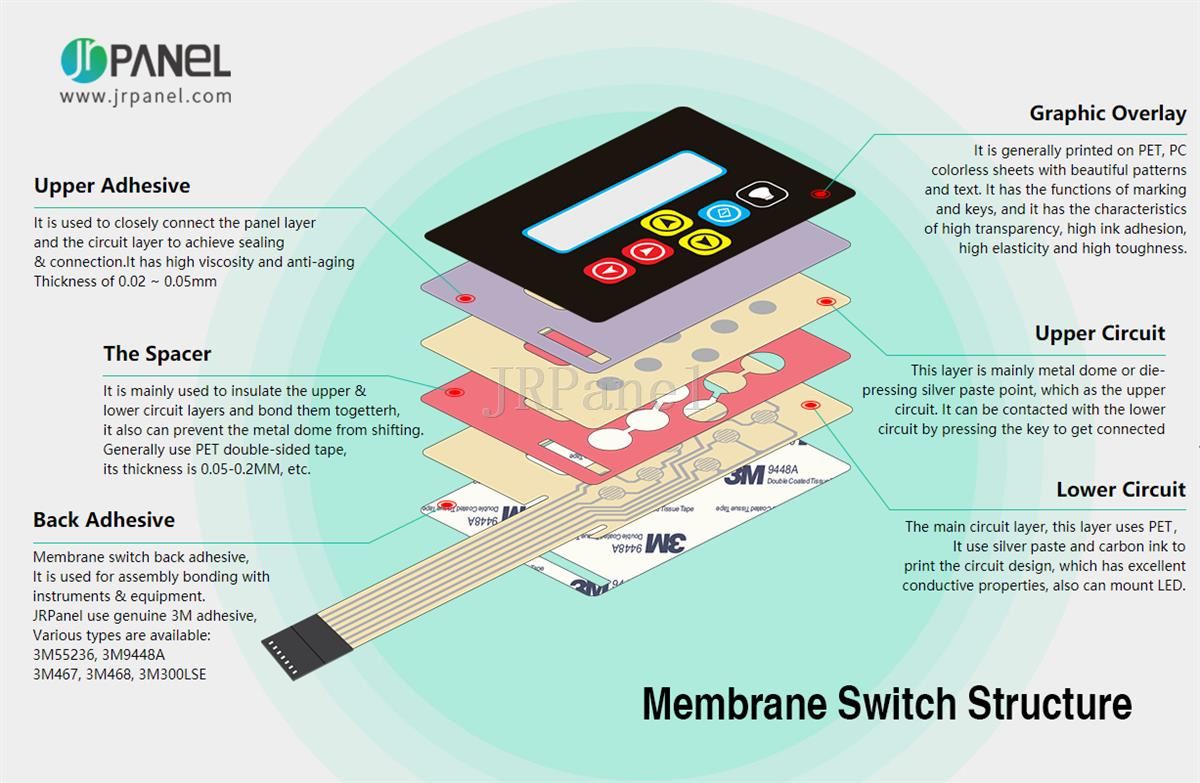Exactly How Membrane Switches Contribute to the Resilience of Electronic Control Panels
Membrane layer switches play an essential function in enhancing the sturdiness of digital control panels, largely with their multi-layered construction which gives efficient protection versus ecological variables such as moisture and dirt. The lack of moving components significantly reduces the probability of mechanical failings, making membrane switches over suitable for requiring applications.
Interpretation of Membrane Layer Switches

Membrane buttons are made to be thin and light-weight, making them suitable for applications where room is restricted. They can be manufactured in different shapes, sizes, and colors, using adaptability in layout that meets visual and practical requirements. Additionally, membrane layer switches can integrate different modern technologies, such as tactile responses and LED indicators, improving individual experience.
Because of their building, membrane buttons are typically immune to dirt, wetness, and general wear, adding to their resilience sought after settings. Their seamless design not only promotes easy cleaning yet likewise decreases the threat of mechanical failing, making them a recommended selection for makers looking for reliable customer interfaces in their electronic control board.
Defense Versus Ecological Factors
The layout of membrane layer switches inherently gives a level of security against different ecological variables, which is important for keeping capability in difficult problems - Membrane Switch. These switches are normally constructed with layers of versatile products that secure interior parts from dampness, dirt, and contaminants. By enveloping the wiring, membrane changes decrease the risk of brief circuits and corrosion, which can significantly impair efficiency
Furthermore, the use of robust adhesives and sealants during production boosts their resistance to ecological obstacles. Membrane layer buttons can endure exposure to chemicals and solvents, making them suitable for industries such as food processing and healthcare, where hygiene and tidiness are extremely important. Their seamless surface area design also prevents the build-up of dirt and bacteria, helping with easier cleansing and maintenance.
Temperature level variations are another ecological problem, and membrane switches are engineered to function effectively across a variety of temperatures (Membrane Switch). This versatility guarantees that control panels remain operational in numerous settings, from industrial environments to customer electronics
Effect on Individual Interaction
Individual interaction with digital control panels is significantly influenced by the layout and functionality of membrane layer switches. These switches offer a tactile user interface that enhances the overall individual experience, enabling instinctive navigation and control. Their receptive nature makes sure that individuals obtain prompt feedback upon activation, which is important for jobs requiring precision and effectiveness.
Furthermore, the smooth surface area of membrane switches over helps with simple cleansing and upkeep, advertising customer confidence in the dependability of the user interface. This cleanliness is specifically crucial in settings where health is critical, such as clinical or food handling setups. Additionally, the portable and light-weight design of membrane layer switches over adds to the aesthetic allure of control panels, encouraging individual involvement through a modern-day and sleek appearance.
Additionally, the combination of visual elements, such as published symbols and backlighting, aids individuals promptly recognize features, decreasing the finding out contour related to brand-new tools. As an outcome, users can run devices extra efficiently, bring about increased performance and fulfillment. In browse around this site summary, membrane layer switches play a crucial duty in enhancing customer interaction by combining capability, appearances, and simplicity of usage, ultimately leading to improved operational effectiveness.
Layout Adaptability and Customization
Design adaptability and customization are vital elements of membrane buttons, allowing producers to customize electronic control board to specific applications and individual needs. This versatility permits the combination of various layout aspects, such as colors, graphics, and appearances, which can enhance the visual charm and customer involvement of the control panel.
Membrane layer buttons can be personalized in dimension and shape, fitting a variety of gadgets and applications, from commercial machinery to customer electronic devices. This convenience makes certain that manufacturers can develop user-friendly user interfaces that straighten with customer expectations and operational requirements. Additionally, the capability to incorporate one-of-a-kind features such as backlighting or tactile feedback further enhances functionality, enabling a more interactive experience.
Additionally, the manufacturing process for membrane layer changes supports the quick prototyping of designs, making it possible for makers to repeat and refine their concepts quickly. This ability not just accelerates the development timeline however also ensures that the final item meets specific functional and aesthetic requirements.

Cost-Effectiveness and Durability
Cost-effectiveness and long life are significant advantages of membrane switches, making them an attractive option for manufacturers and end-users alike. These buttons are generally cheaper to generate than traditional mechanical switches, mainly as a result of their streamlined manufacturing processes and the reduced variety of elements called for. This expense benefit prolongs not only to initial manufacturing yet also to long-lasting operational costs, as membrane layer switches often need much less maintenance and have a lower failing price.
Additionally, the durability of membrane switches contributes to their general worth. Constructed look what i found from sturdy products, they are resistant to ecological aspects such as wetness, dust, and chemicals, which can lead to early wear in various other button kinds. The lack of relocating components decreases mechanical failure, permitting membrane switches over to keep capability over extended durations.
This longevity is especially advantageous in applications calling for consistent performance under requiring conditions, such his response as clinical tools and industrial tools. Inevitably, the combination of cost-effectiveness and durability makes membrane layer switches over an economically feasible option for manufacturers, offering reliable solutions that stand up to the test of time while optimizing monetary considerations.
Final Thought
In final thought, membrane switches dramatically improve the toughness of electronic control panels via their durable building and protective attributes - Membrane Switch. In general, membrane layer changes represent a trusted and cost-effective option for improving the longevity and capability of digital control systems.